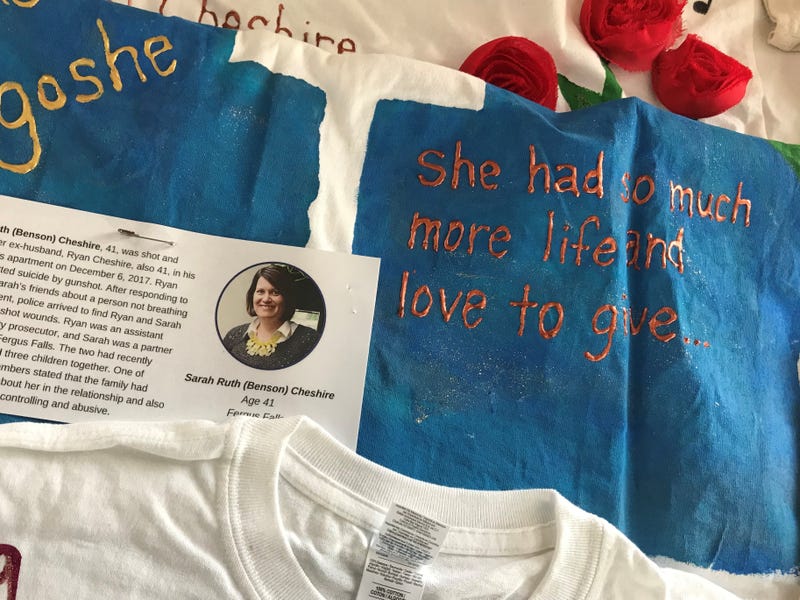
Ramsey County is touting its efforts to curb domestic violence, but officials say combating an endemic problem requires the community.
As partners in the ongoing battle to stem the tide of domestic violence greeted each other, fresh tissue boxes sat on multiple seats. Thursday's meeting amongst multiple areas of law enforcement, community groups and victims' advocates was about celebrating their progress and collaboration on the final day of Domestic Violence Awareness Month, but they would also be confronted with harsh statistics and heartbreaking stories.
That included the story of survivor Jennifer, who did not want her last named used, who recounted harrowing years of abuse by her child's father, including one hours-long incident in which she says he hit her and threatened to rape and kill her.
"Domestic violence isn't about two people disagreeing," she said. "It is a person subjecting another person to terror and threatning everyone they car about. I did not know that there was evil until that day."
Fourteen people so far this year in Minnesota have died in domestic-related homicides. More than half involved firearms. 523 women have been killed in 30 years in Minnesota.
"We're having a big conversation about public safety in St. Paul right now, and we are grappling, as a city, with what it means to move our city beyond the cycles of violence we've seen not just over the last few months, but over the last few generations," Mayor Melvin Carter said.
Started in 1984, the St. Paul-Ramsey County Domestic Abuse Intervention Project serves 5,800 victims and their children every year and responds to 8,000 calls. Its Blueprint for Safety Steering Committee has a new goal: to help better enforce a 2014 state law requiring domestic abuse perpetrators to turn over the firearms. Officials say the gap between the number of orders for protection issued and the number of gun relinquished is too big. Data from 2015 show just 8 percent turned over their firearms. Research shows the presence of a gun in domestic violence situations increases the risk of homicide for women.
Ramsey County Sheriff Bon Fletcher reemphasized his support for "red flag" laws, which allow a family or law enforcement to petition a judge to temporarily remove firearms from a person who is a threat to themselves or someone else.
"There are always warning signs," he said. "We call those red flags. There are always red flags in an offender's behavior, and as a society, we owe it to these victims to do something about those red flags."
Data backs up Sheriff Fletcher: a history of domestic violence can be a precursor to homicide.
County Attorney Minnesota John Choi echoed the role of community.
"It's not just about the response," he said. "It's not just about the police. It's not just about the prosecution, but it's also about prevention and thinking about that really critical conversation we need to have in our schools, within our families, in our places of worship about how we raise boys and how they grow up to be men that don't do these things."
